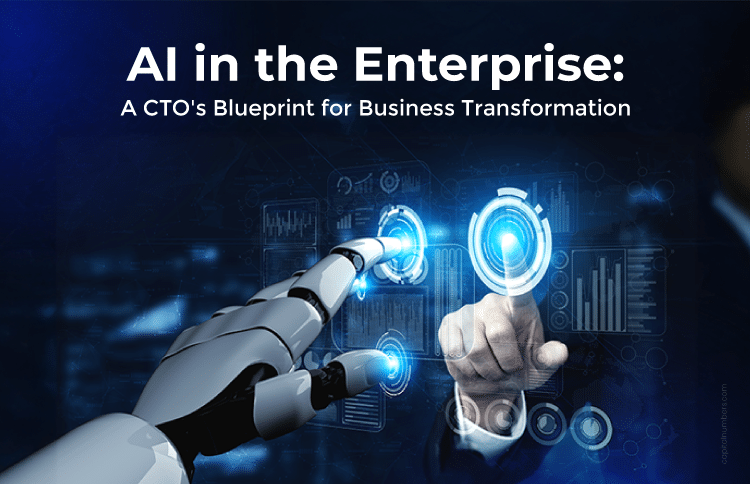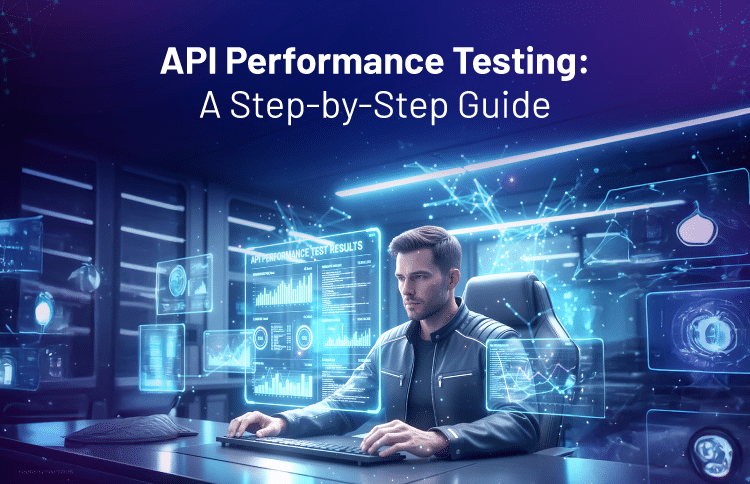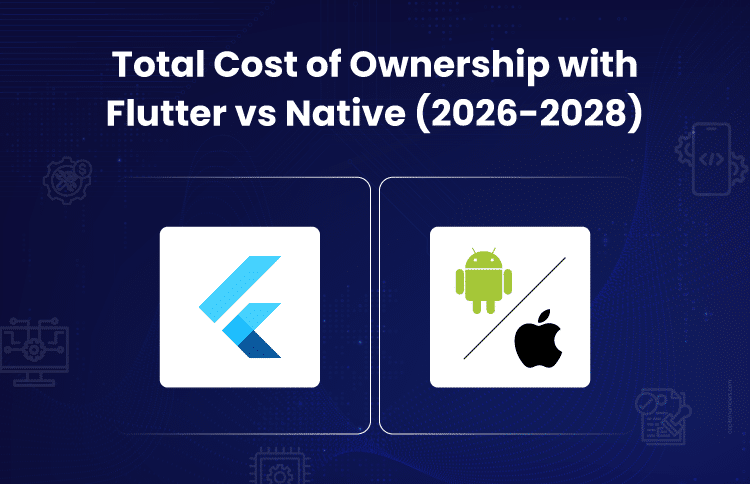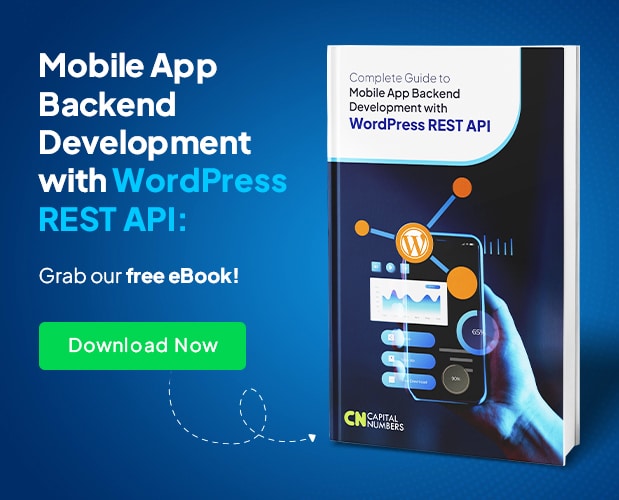AI in the Enterprise: A CTO’s Blueprint for Business Transformation
Table of Contents
In the ever-evolving landscape of enterprise technology, few forces have promised a revolution as profound and far-reaching as Artificial Intelligence (AI). For Chief Technology Officers (CTOs), AI is no longer a futuristic concept whispered about in research labs; it’s a present-day reality demanding strategic implementation. The C-suite is looking to their tech leaders not just for an understanding of AI, but for a clear blueprint to harness its power for tangible business transformation. This isn’t about chasing trends; it’s about survival and thriving in an era where data-driven intelligence is the new currency.
This comprehensive guide is designed to be that blueprint. We’ll move beyond the buzzwords and the hype to provide a pragmatic, actionable framework for CTOs to lead their organizations through the AI adoption journey. From laying the foundational groundwork and identifying high-impact use cases to navigating the complexities of ethics, governance, and talent development, we’ll cover the entire lifecycle of enterprise AI.
Whether you’re taking your first tentative steps into AI or looking to scale your existing initiatives, this blog post will equip you with the insights and strategies needed to turn the promise of AI into a powerful engine for growth and innovation. As a CTO, you’re not just implementing tools – you’re architecting the future of your company. This blueprint cuts through the hype and gives you actionable strategies to harness AI for real impact.
Why AI Matters in the Enterprise
First things first: what’s the big deal with AI? At its core, AI is about teaching machines to think and act a little like humans. It’s a huge umbrella that covers stuff like machine learning (where computers learn from data), natural language processing (think chatbots that actually understand you), and computer vision (machines that can “see” images or videos).
In a business setting, AI is like a super-smart assistant that never sleeps.
Here’s why it’s a game-changer:
- Speed and Efficiency: AI can handle repetitive tasks – like sorting through mountains of data – in a fraction of the time it’d take a human. That means your team can focus on the fun, creative stuff.
- Smarter Decisions: With AI, you can dig into data and spot patterns or trends you’d never see on your own. It’s like having a crystal ball for your business.
- Happy Customers: Ever get a spot-on product recommendation online? That’s AI at work, making experiences personal and keeping customers coming back.
The numbers back this up, too. McKinsey says AI could add a whopping $13 trillion to the global economy by 2030. PwC’s got an even bigger guess – $15.7 trillion! Point is, companies that get on board with AI are seeing real results, from higher profits to happier employees. We’re going deeper here – showing you not just what AI can do, but why it’s a must-have.
The Shifting Role of the CTO: From Technologist to AI Evangelist
The rise of enterprise AI has fundamentally transformed the role of the CTO. No longer confined to the realms of infrastructure and software development, the modern CTO must now be an “AI evangelist” within their organization. This means more than just understanding the technology; it requires the ability to articulate the strategic business value of AI to the rest of the C-suite, to inspire a culture of data-driven decision-making, and to champion the ethical and responsible implementation of AI.
This new mandate requires a delicate balance of technical acumen and business strategy. The CTO must be able to translate complex AI concepts into a language that resonates with non-technical stakeholders, demonstrating how AI can solve real-world business problems and drive measurable outcomes. This involves:
- Educating the Executive Team: Proactively educating the CEO, CFO, and other leaders on the potential and limitations of AI. This includes demystifying the technology and setting realistic expectations about what it can achieve.
- Building a Cross-Functional AI Council: Fostering collaboration between IT, data science, legal, and business units to ensure that AI initiatives are aligned with overarching business goals and ethical guidelines.
- Championing a Data-First Culture: Advocating for the importance of high-quality, accessible data as the lifeblood of any successful AI strategy.
You May Also Read: Democratizing AI: Building an AI-First Culture within Your Organization
Laying the Groundwork: Preparing Your Enterprise for AI
Before a single algorithm is deployed, a solid foundation must be in place. Rushing into AI without the necessary prerequisites is a recipe for stalled projects and wasted investments. Here’s what CTOs need to focus on:
1. Data Infrastructure and Governance: The Essential Yet Understated Backbone
AI is only as good as the data it’s trained on. This well-worn adage has never been more true. A robust data infrastructure is the bedrock of any successful AI implementation. This includes:
- Modernizing Your Data Architecture: Moving away from siloed, legacy systems to a more unified and scalable data architecture. Cloud-based data warehouses and data lakes are often the preferred choice for their flexibility and cost-effectiveness.
- Ensuring Data Quality and Accessibility: Implementing processes for data cleansing, validation, and enrichment. Data must be accurate, consistent, and readily accessible to the teams that need it.
- Establishing a Strong Data Governance Framework: Defining clear policies and procedures for data ownership, access control, and security. This is not just a matter of compliance; it’s about building trust in your data and the AI systems that rely on it.
You May Also Read: Data Engineer vs. Data Analyst: Who Is the Right Fit for Your Business?
2. Identifying High-Impact Use Cases: Where to Start Your AI Journey
The possibilities for AI in the enterprise are virtually limitless. The key to early success is to start with a few high-impact use cases that can deliver tangible results and build momentum for wider adoption. Here’s how to identify them:
- Align with Business Objectives: The most successful AI initiatives are those that are closely aligned with key business goals, such as increasing revenue, reducing costs, or improving customer satisfaction.
- Start with Low-Hanging Fruit: Look for processes that are repetitive, data-intensive, and prone to human error. These are often prime candidates for automation with AI.
- Think Big, Start Small, Scale Fast: While it’s important to have a long-term vision for AI, it’s equally important to start with small, manageable projects that can deliver quick wins. Once you’ve proven the value of AI in one area, you can then look to scale it across the organization.
Potential High-Impact Use Cases Across Industries:
| Industry | Use Case | Business Impact |
|---|---|---|
| Retail | Personalized product recommendations | Increased customer loyalty and sales |
| Manufacturing | Predictive maintenance of machinery | Reduced downtime and maintenance costs |
| Healthcare | AI-powered diagnostic tools | Improved accuracy and speed of diagnoses |
| Finance | Algorithmic trading and fraud detection | Enhanced profitability and security |
| Customer Service | AI-powered chatbots and virtual assistants | Improved customer satisfaction and reduced support costs |
You May Also Read: AI in 2025: Reshaping Healthcare, Finance, and Retail
The Rise of AI Agents and the Agentic Development Lifecycle (ADLC)
A significant trend shaping the future of enterprise AI is the emergence of AI agents. These are autonomous systems that can perceive their environment, make decisions, and take actions to achieve specific goals. Think of them as intelligent workers that can automate complex workflows and interact with other systems and humans.
This shift towards AI agents is giving rise to a new paradigm in software development: the Agentic Development Lifecycle (ADLC). Unlike the traditional Software Development Lifecycle (SDLC), which is focused on building static applications, the ADLC is centered on creating and managing dynamic, learning AI agents. This requires a new set of skills and tools, including:
- Orchestration Platforms: Tools for managing the interactions between multiple AI agents and other systems.
- Prompt Engineering: The art and science of crafting effective prompts to guide the behavior of large language models (LLMs) and other generative AI systems.
- Continuous Learning and Adaptation: Building systems that can learn and adapt from new data and feedback in real-time.
For CTOs, embracing the ADLC means rethinking their approach to software development and investing in the skills and technologies needed to build and manage a workforce of AI agents.
You May Also Read: AI Agents vs Agentic AI: Key Differences Explained
Building Your AI Team: The Talent Equation
A successful AI strategy is as much about people as it is about technology. Building a talented and diverse AI team is one of the biggest challenges facing CTOs today. Here are some key considerations:
- Identifying the Right Skills: The skills needed for enterprise AI go beyond traditional software engineering. You’ll need a mix of data scientists, machine learning engineers, data engineers, and AI ethicists.
- Upskilling and Reskilling Your Existing Workforce: Don’t overlook the talent you already have in-house. Investing in training and development programs can help you upskill your existing employees and fill key AI roles from within.
- Fostering a Culture of Collaboration and Experimentation: AI is a rapidly evolving field. To stay ahead of the curve, you need to create a culture where your team feels empowered to experiment, learn from their failures, and share their knowledge with others.
- The Rise of the AI Translator: A critical, and often overlooked, role is that of the “AI Translator.” This individual bridges the gap between the technical and business sides of the organization, helping to ensure that AI projects are aligned with business needs and that the insights from AI are effectively communicated to decision-makers.
Navigating the Ethical and Governance Maze
As AI becomes more powerful and pervasive, the ethical and governance challenges it presents become more acute. CTOs have a critical responsibility to ensure that their organization’s use of AI is responsible, transparent, and fair. This includes:
- Developing a Robust AI Governance Framework: This framework should outline your organization’s principles for ethical AI, as well as the processes and controls you have in place to ensure compliance. Key pillars of this framework should include:
- Transparency and Explainability: The ability to understand and explain how your AI models make decisions. This is crucial for building trust and for complying with regulations like the EU’s GDPR.
- Fairness and Bias Mitigation: Taking steps to identify and mitigate bias in your data and algorithms to ensure that your AI systems are fair and equitable.
- Accountability and Human Oversight: Establishing clear lines of accountability for the outcomes of your AI systems and ensuring that there is always a human in the loop to override or intervene when necessary.
- Staying Abreast of Evolving Regulations: The regulatory landscape for AI is constantly changing. CTOs need to stay informed about new laws and regulations and ensure that their organization’s AI practices are compliant.
Measuring the ROI of AI: Moving Beyond the Hype
One of the biggest challenges for CTOs is to demonstrate the return on investment (ROI) of their AI initiatives. While some benefits of AI, such as cost savings from automation, are relatively easy to quantify, others, such as improved customer satisfaction and increased innovation, are more intangible.
To effectively measure the ROI of AI, you need to take a holistic approach that considers both the hard and soft benefits. Here are some key metrics to track:
Hard ROI Metrics:
- Cost Savings: Reductions in operational costs from automation and improved efficiency.
- Revenue Growth: Increased revenue from new products and services, improved sales and marketing effectiveness, and enhanced customer loyalty.
- Productivity Gains: Improvements in employee productivity from automating repetitive tasks and providing them with better tools and insights.
Soft ROI Metrics:
- Improved Customer Satisfaction: Higher customer satisfaction scores (CSAT) and Net Promoter Scores (NPS) from more personalized and responsive customer experiences.
- Enhanced Decision-Making: Faster and more accurate decision-making from having access to better data and insights.
- Increased Innovation: The development of new and innovative products and services that would not have been possible without AI.
The Future is Intelligent: A Look Ahead
The pace of innovation in AI is relentless. As we look to the future, we can expect to see even more transformative developments, including:
- The Proliferation of Generative AI: Generative AI, which can create new content such as text, images, and code, will become increasingly integrated into enterprise applications, unlocking new possibilities for creativity and productivity.
- The Rise of Autonomous Enterprises: As AI agents become more sophisticated, we will see the emergence of “autonomous enterprises” where many business processes are fully automated and managed by AI.
- The Democratization of AI: AI will become more accessible to a wider range of users, with the development of low-code and no-code AI platforms that allow non-technical users to build and deploy their own AI models.
- AI with a Conscience: People are demanding AI that’s fair and clear about how it works. Companies are now building “explainable AI” so you can see why it made a call – like approving a loan or not.
- Edge AI: This is AI that runs on devices (like phones or factory machines) instead of big servers. It’s faster and keeps data private – perfect for industries like manufacturing.
Key Takeaways
AI in the enterprise is no longer a distant dream – it is actively being implemented, and its success depends on efforts to make it effective. Whether operations are being streamlined, customers are being delighted, or entirely new innovations are being developed, this blueprint provides support. The reasons for AI’s significance, the steps required, the methods to achieve it, and the trends to inspire have been covered.
By embracing CTO’s new role as AI evangelists, laying a strong foundation, and navigating the challenges with a clear-eyed and strategic approach, they can lead their organizations to a future where intelligence is at the heart of everything they do. The blueprint is here; the transformation awaits.

















